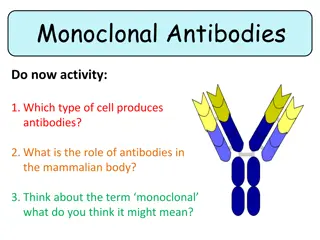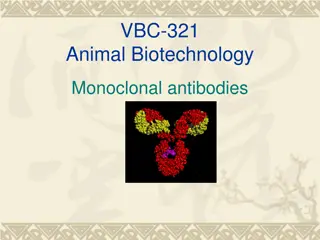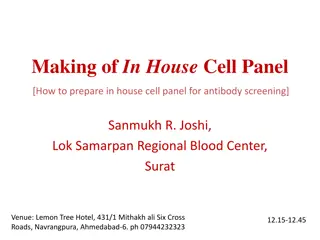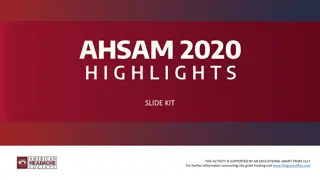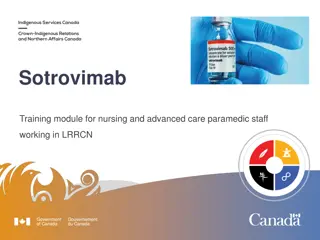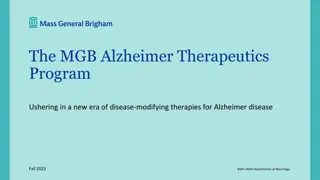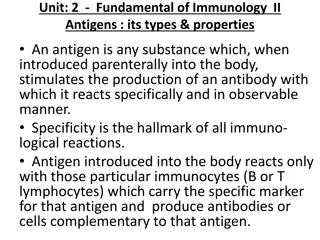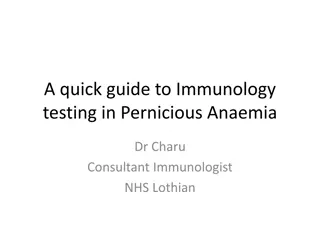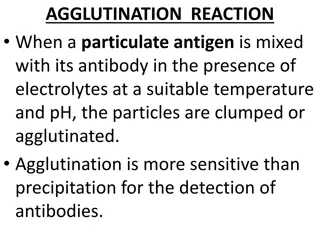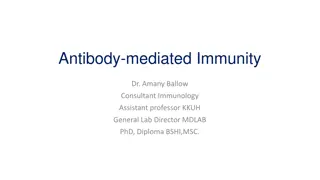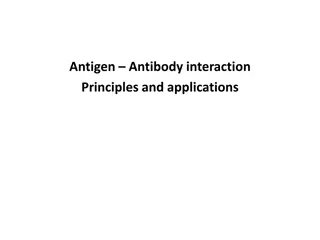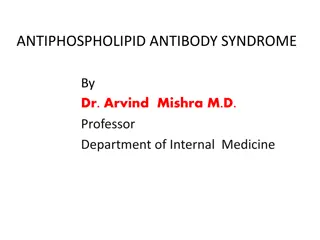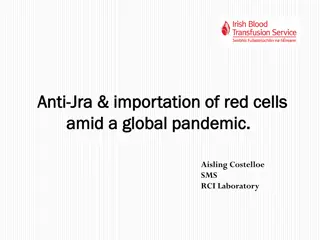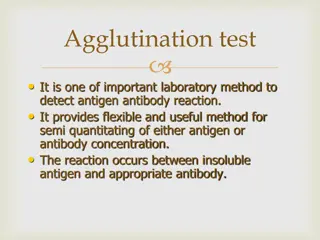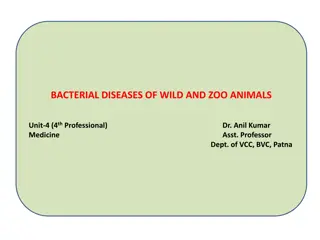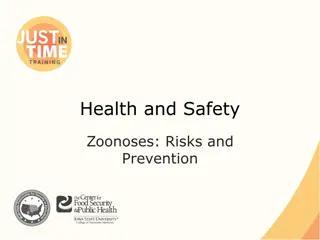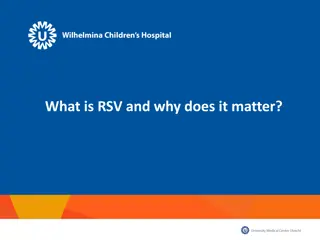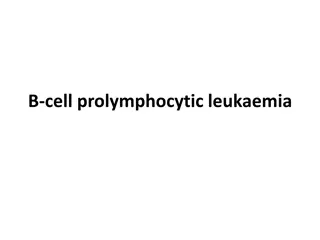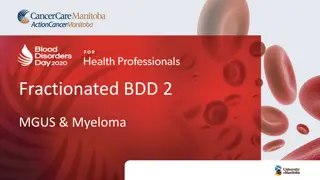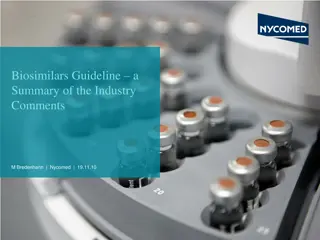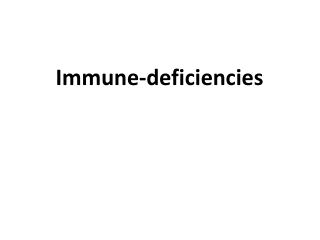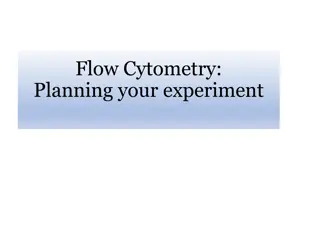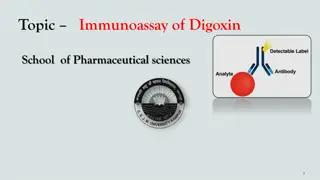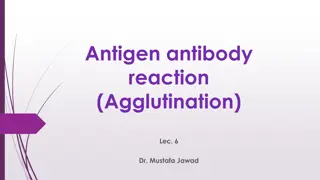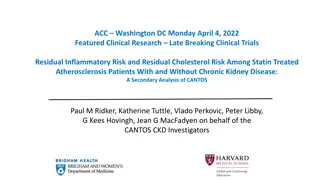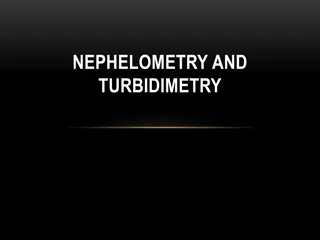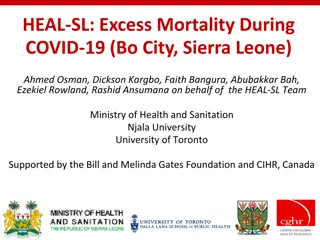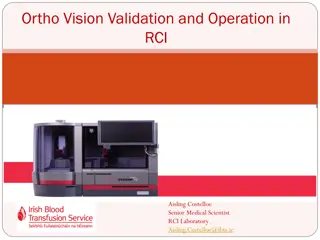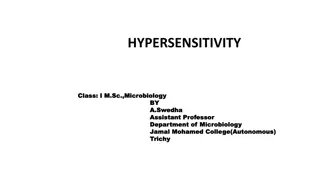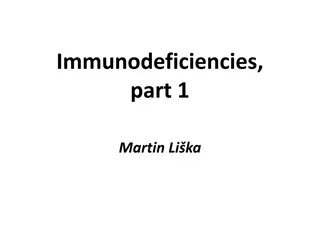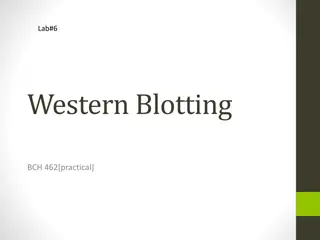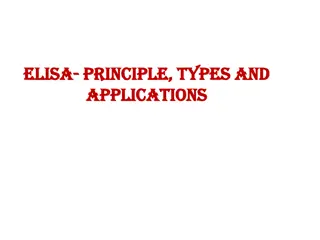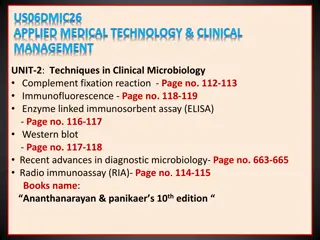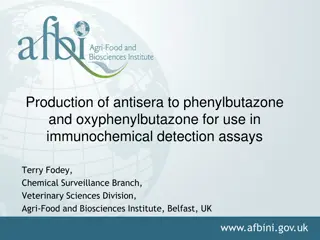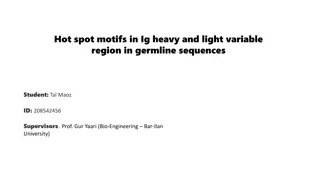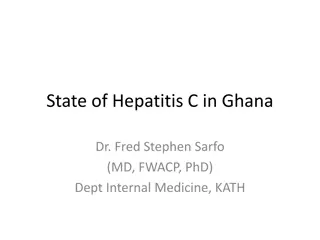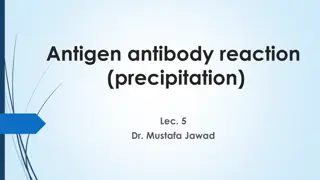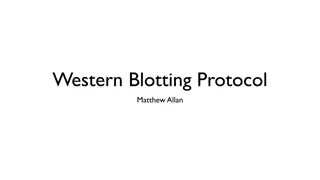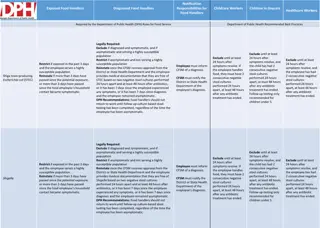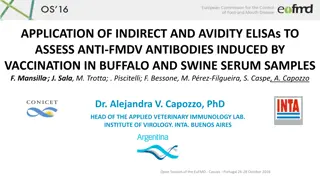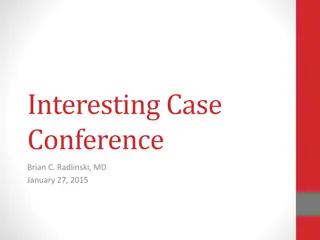Raxibacumab: Monoclonal Antibody for Inhalational Anthrax
Raxibacumab is a human IgG1 monoclonal antibody designed to treat and prevent inhalational anthrax caused by Bacillus anthracis. It targets the protective antigen component of the anthrax toxin, inhibiting its binding to cellular receptors and preventing toxin entry. Administered via IV infusion, Raxibacumab does not cross the blood-brain barrier and has a molecular weight of approximately 146 kDa. Common adverse reactions include rash, pain, pruritus, and somnolence. It is recommended in combination with antibacterial drugs for treatment and prophylaxis when alternative therapies are not available.
Download Presentation

Please find below an Image/Link to download the presentation.
The content on the website is provided AS IS for your information and personal use only. It may not be sold, licensed, or shared on other websites without obtaining consent from the author. Download presentation by click this link. If you encounter any issues during the download, it is possible that the publisher has removed the file from their server.
E N D
Presentation Transcript
DB08902 RAXIBACUMAB C6320H9794N1702O1998S42 142.8 kDa CATEGORY Anti-Infective Agents and Monoclonal antibodies
DESCRIPTION Raxibacumab is a human IgG1 monoclonal antibody that binds the protective antigen (PA) component of B. anthracis toxin. Raxibacumab has a molecular weight of approximately 146 kilodaltons. Raxibacumab is produced by recombinant DNA technology in a murine cell expression system. FDA approved on December 14, 2012. INDICATION Raxibacumab is indicated for the treatment of adult and pediatric patients with inhalational anthrax due to Bacillus anthracis in combination with appropriate antibacterial drugs, and for prophylaxis of inhalational anthrax when alternative therapies are not available or are not appropriate. MECHANISM OF ACTION Raxibacumab is a monoclonal antibody that binds free PA with an affinity equilibrium dissociation constant (Kd) of 2.78 0.9 nM. Raxibacumab inhibits the binding of PA to its cellular receptors, preventing the intracellular entry of the anthrax lethal factor and edema factor, the enzymatic toxin components responsible for the pathogenic effects of anthrax toxin. It does not have direct antibacterial activity. TOXICITY The most frequently reported adverse reactions were rash, pain in extremity, pruritus, and somnolence.
ABSORPTION Raxibacumab does not cross the blood-brain-barrier. When a single IV dose of 40 mg/kg was administered to healthy, male and female human subjects, the pharmacokinetic parameters are as follows: Cmax = 1020.3 140.6 mcg/mL; AUCinf = 15845.8 4333.5 mcg day/mL; Bioavailability is also dependent on site of injection. When administered to the vastus lateralis, the bioavailability is 71-85%. When administered to the gluteus maximus, the bioavailability is 50-54%. HALF-LIFE Mean terminal elimination half-lives of raxibacumab are as follows; IM dose = 15-19 days; IV dose = 16-19 days ROUTE OF ELIMINATION Urine VOLUME OF DISTRIBUTION = Steady state volume of distribution exceeded plasma volume. This suggests that there is some distribution into the tissues. CLEARANCE = Clearance values were much smaller than the glomerular filtration rate indicating that there is virtually no renal clearance of raxibacumab. TARGETS Protective antigen
Raxibacumab (IV infusion) http://www.ncbi.nlm.nih.gov/mesh/?term=Raxibacumab http://www.ncbi.nlm.nih.gov/pmc/articles/PMC2791309/ http://www.ncbi.nlm.nih.gov/medgen/?term=Raxibacumab Raxibacumab injection is given with antibiotic medicines to treat inhalational anthrax. It is also used to prevent inhalational anthrax when there are no other available treatments. Slideshow: Foodborne Illness: The Thanksgiving Guest Nobody Invited Foodborne Illness: The Thanksgiving Guest Nobody Invited Anthrax is a serious disease that may cause death. It is spread by touching or eating something that is infected with the anthrax germ, such as animals, or by breathing in the anthrax germ. anti-PA human recombinant, IgG1 mAb comprises a human IgG1 with a light chain, and one N-linked glycosylation site per heavy chain. The isoelectric point is approximately 9.0, and the antibody has a molecular weight of approximately 150 kilodalton.
Derived from murine NS0 cell line VIAL: Raxibacumab is supplied as a sterile, liquid formulation in single-dose vials for intravenous infusion. Each vial contains 50 mg/mL raxibacumab in citric acid (0.13 mg/mL), glycine (18 mg/mL), polysorbate 80 [0.2 mg/mL (w/v)], sodium citrate (2.8 mg/mL), and sucrose (10 mg/mL), with a pH of 6.5. Each vial contains a minimum of 35.1 mL filled into a 50 mL vial (to allow delivery of 1,700 mg/34 mL). Raxibacumab is a clear to opalescent, colorless to pale yellow, liquid. DOSAGE: recommended dose of raxibacumab is weight-based, given as an intravenous infusion after dilution in a compatible solution to a final volume of 250 mL (adults and children 50 kg or heavier) or to a volume indicated based on the child s weight. single dose of 40 mg/kg intravenously over 2 hours and 15 minutes after dilution in 0.9% Sodium Chloride Injection, USP (normal saline) to a final volume of 250 mL. Administer 25 to 50 mg diphenhydramine within 1 hour prior to raxibacumab infusion to reduce the risk of infusion reactions. Diphenhydramine route of administration (oral or IV) should be based on the temporal proximity to the start of raxibacumab infusion.
REFERENCES http://www.ncbi.nlm.nih.gov/pubmed/24812521 http://www.ncbi.nlm.nih.gov/pubmed/23545582 http://www.ncbi.nlm.nih.gov/pubmed/23344456 http://www.ncbi.nlm.nih.gov/pubmed/20450444 http://www.ncbi.nlm.nih.gov/pubmed/20068396 http://www.ncbi.nlm.nih.gov/pubmed/19587338


